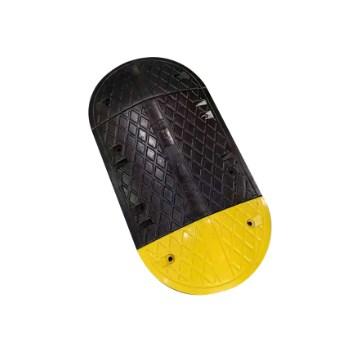The Strategic Implementation of Cable Cover Speed Bumps for Enhanced Workplace Safety

The cable cover speed bump, often simply referred to as speed bump, is an innovative safety device designed to protect both pedestrians and cables in busy industrial, commercial, and public environments. These protective covers not only manage the visibility and accessibility of cables but also serve as a deterrent to high-speed traffic, thereby reducing the risk of accidents caused by tripping hazards or vehicle damage.
The primary function of cable cover speed bumps is to provide a physical barrier that spans across cables laid on floors or walkways, ensuring that they do not pose a tripping risk. These speed bumps are typically made from durable materials such as rubber, plastic, or metal, which can withstand heavy foot and vehicle traffic without compromising their structural integrity. The design of cable cover speed bumps allows for easy cable management, with some models featuring built-in channels or slots for cable organization.
One of the key benefits of cable cover speed bumps is their ability to slow down vehicles within a designated area. By creating a physical obstacle, these speed bumps encourage drivers to reduce their speed, thus minimizing the risk of accidents. This is particularly important in areas where pedestrians and vehicles share the same space, such as in warehouses, factories, and large office buildings.
Another advantage of cable cover speed bumps is their customizable nature. They come in various sizes, shapes, and colors, allowing businesses and facilities to choose the most suitable option for their specific needs. Some models even feature reflective strips or lights to enhance visibility, especially in low-light conditions.
The installation of cable cover speed bumps is generally straightforward and can be done without the need for extensive construction work. This makes them a cost-effective solution for improving safety in areas where cables are a common feature. Moreover, their modular design allows for easy expansion or reconfiguration as the needs of the facility change.
Maintenance of cable cover speed bumps is relatively simple, requiring only periodic checks for wear and tear, as well as cleaning to remove dirt and debris that may accumulate over time. This low-maintenance aspect contributes to their overall appeal as a long-term safety solution.
In terms of regulatory compliance, cable cover speed bumps can help facilities meet safety standards and guidelines set by various organizations and government bodies. By reducing the risk of tripping and vehicle-related accidents, these speed bumps contribute to a safer working environment and can potentially lower insurance premiums and avoid costly legal disputes.
In conclusion, cable-cover speed bumps are a vital safety feature in many settings where cables and pedestrian traffic coexist. They serve a dual purpose of protecting both people and equipment from potential hazards. With their customizable options, ease of installation, and low maintenance requirements, cable cover speed bumps offer a practical and effective solution to enhance safety in various environments. By incorporating these speed bumps into their safety strategies, businesses and facilities can demonstrate their commitment to creating a secure and accident-free workplace.
- Art
- Causes
- Crafts
- Dance
- Drinks
- Film
- Fitness
- Food
- Games
- Gardening
- Health
- Home
- Literature
- Music
- Networking
- Other
- Party
- Religion
- Shopping
- Sports
- Theater
- Wellness


